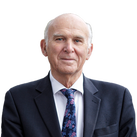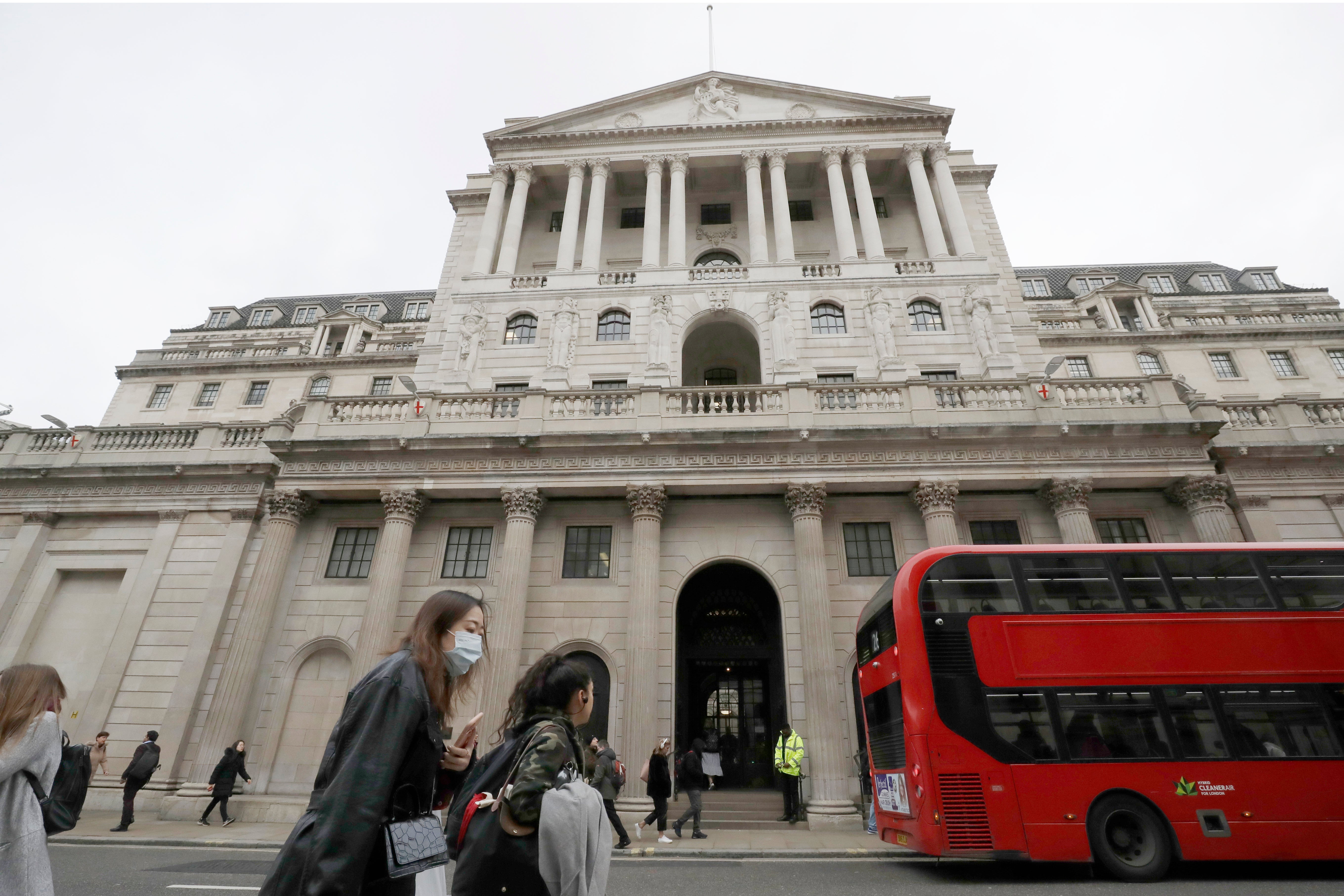The days of the magic money tree are numbered and painful decisions will have to be made by government
Big spenders with a fondness for vanity projects like the prime minister are beginning to realise that the Treasury is king and in a mean mood, writes Vince Cable


A few weeks ago, my friend, an environmentalist, approached me to discuss an idea circulating in “green” circles: that the best way to pay for the mouthwatering sums required for a rapid conversion to a zero-carbon economy is through “green QE” – or quantitative easing.
I hated to be negative since I share the same objective, but I had to point out that the big idea currently under discussion amongst central bankers is the opposite: how best to phase out the large-scale purchase of government bonds – which is the basis of QE. The days of QE as a magic money tree to finance governments are numbered.
The balance sheets of central banks are mysteries even to clever people who are paid large sums to interpret the financial positions of large companies. Who in the real world is bothered that, within the last two years, the American Federal Reserve has doubled – to $8tn (£5.8tn) – the value of government bonds sitting on its balance sheet? (The Bank of England has around £1tn).
The short answer begins with events more than a decade ago, after the financial crisis. Western economic authorities were looking for ways of stimulating their economies when low-interest rates had already hit rock bottom. Governments were worried about the size of their budget deficits and mounting public debt and so were constrained in borrowing more. By buying up government bonds, central banks could stimulate growth, though the transmission mechanisms – explaining how QE actually worked – were and still are being debated.
It succeeded, nonetheless, and because it worked there was even bigger recourse to QE when the pandemic threatened to create an even deeper recession than the financial crisis.
But there were nasty side effects, as is often the case with lifesaving drugs. QE didn’t just boost the price of bonds but of other assets: shares, housing, cryptocurrencies and much else. These markets have generated large bubbles which have continued to inflate to record levels. Bubbles, however, eventually burst.
In the meantime, vast inequalities in wealth have been created which owe little to merit, work or good investment decisions. In particular, great hardship has been caused in several countries by the inflation of property values making decent housing unaffordable.
But until now, the positives outweighed the negatives. Covid caused a collapse in government revenues just as huge additional spending was needed, so QE threw a lifeline to treasuries around the world. It was necessary for governments to borrow heavily and convenient to have central banks buying up the debt.
The cost of borrowing has been kept down since these vast purchases drove down the yields on bonds (in effect, the interest rate on debt). It was this phenomenon that gave rise to the idea that governments were using the central banks to “print money” and could potentially do so in unlimited amounts: the magic money tree. But there was a snag for those who believed in magic: these bonds – instruments of government debt – didn’t just disappear.
Central banks held those bonds on their balance sheets and always said that they would sell them back into the market in due course, driving up long-term interest rates. The slowing, then stopping, then reversing of QE is a subject much discussed in academia but has only now surfaced as a practical problem.
The trigger for raising this issue is that QE seems to have largely done its job along with government economic rescue measures like Mr Sunak’s recent budgets and the Trump/Biden stimulus packages. Plus, there has been confidence generated by successful vaccination programmes.
The worry has shifted instead to the dangers of overheating: inflation. The appearance of labour shortages, in the US and UK particularly, has reinforced the inflation scare. Since central banks have a legal mandate to control inflation, they have a duty to act. And that action involves phasing out QE and, in due course, reversing it.
We may now be at that point. Those who are worried about the health of the world economy switched off from the drama in Kabul last week and were glued instead to a Zoom conference featuring the Chairman of the US Federal Reserve, Jerome Powell, and his peers. Several conclusions emerged.
First, Mr Powell and the central bankers are moving with extreme care; to borrow a metaphor, like people carrying a Ming vase across a polished floor. They are finding it difficult to judge if the US economy, in particular, is “overheating” or at risk of sliding backwards from a promising recovery. China’s rapid recovery may also be slowing with fresh Covid outbreaks.
Cautiously, the central banks are proposing a very gradual end to QE. There are two opposite dangers: sudden tightening of policy could produce a panic in markets and a plunge in confidence, but too much delay could allow inflation to gain significant momentum which will have to be stopped by more draconian measures. The current emphasis is to avoid choking off recovery.
One factor behind the caution is the warning from the International Monetary Fund (IMF) that a move to monetary tightening could hit emerging and low-income countries. These are struggling to cope with the pandemic, cannot obtain vaccines and fear that their own economic troubles would be deepened by a slowdown in the west.
There is also potentially a very messy problem with interest rates once “normal” conditions return. Right now, with QE, the government pays negligible interest on what is, in effect, borrowing from the central bank. Once interest rates start to rise, the government is faced with increased interest payments on its debt, and those interest payments will be competing with other spending priorities.
So, phasing out QE will moreover have a significant effect on governments’ fiscal policy. They will have to confront voters with starker choices: more tax, less public spending, borrowing from markets rather than the central banks.
It isn’t yet clear if the US Congress will consider an ambitious infrastructure bill or a big omnibus of a spending bill, or both. Either way, it seems increasingly likely that there will be a drastic revision downwards as worries set in around who is to pay.
For the UK, the options are also narrowing painfully. The idea of spending large sums on regional “levelling up” and supporting the transition to a zero-carbon economy above more health spending and much else is for the birds. The tone is being set by the removal of the universal credit uplift introduced during the pandemic and cuts to international aid. Big spenders with a fondness for vanity projects like the prime minister are beginning to realise that the Treasury is king and in a mean mood.
Writing in this column a year ago I said that the chancellor’s remarkable popularity in the early days of the pandemic would be unlikely to survive the reckoning which would soon come when borrowing had to be reduced and the magic money tree stopped flowering.
I may have been out in my timing, but the conclusion remains the same: fiscal conservatives like the chancellor are soon going to enforce painful spending decisions. And those who thought that there was a painless way to keep spending lots of money will have to do their sums again.
Sir Vince Cable is the former leader of the Liberal Democrats and served as secretary of state for business, innovation and skills from 2010 to 2015






Join our commenting forum
Join thought-provoking conversations, follow other Independent readers and see their replies
Comments